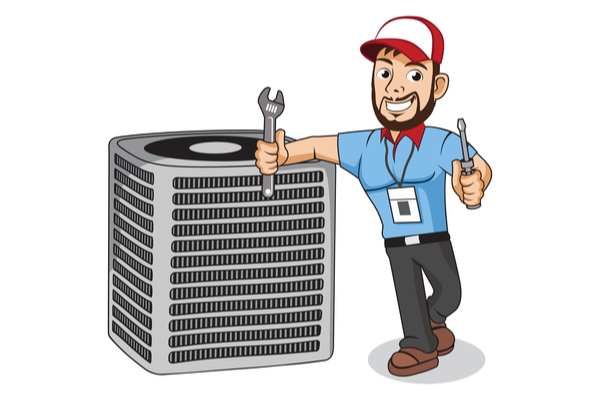As the middle month of autumn, October is a great time to attend to both indoor and outdoor home maintenance tasks. During the changing seasons, the nights are longer and cooler, the days shorter. There’s a chill in the air. Time to winterize your cooler and tune up your heating system for the coming colder winter months.
How to Winterize your Evaporative/Swamp Cooler
In many parts of the country, home cooling is provided by an evaporative cooler rather than standard air conditioning. Also known as a swamp cooler, an evaporative cooler is a fairly simple device that cools air through the physics that causes water to absorb heat from the surrounding air as it transitions from liquid to gaseous form. Evaporative coolers are especially efficient in dry climates, and they are remarkably simple and energy-efficient devices.
While this equipment has few maintenance needs, keeping it operating efficiently requires an annual winterizing process. Prepping your swamp cooler for winter will keep your unit working longer and more efficient and save you from problems including mold and mildew growth, rust and corrosion, and broken water pipes.
Follow these 5 easy steps to winterize your swamp cooler and prevent unwelcome surprises in the spring:
- Unplug the unit, cutting off the power supply. It’s always a smart idea to disconnect the power source before working on any appliance.
- Turn off the water supply valve connected to the cooler and leave off until turning the unit back on in the spring. The water line should also be drained to prevent freezing during the winter. Disconnect the hose from both the supply valve and the cooler; then blow into one end of the tube to get rid of any residual water. Store the hose in a dry place.
- Drain the cooler. Open the drain in the bottom of the cooler to allow the water to drain out. After draining, you’ll find dirt and sediment in the bottom of the pan. Use a shop-vac to remove the dirt, or clean it out using white vinegar and a large sponge. Then rinse out the cooler with fresh water and dry with a rag. Leave the drain open to allow any rainwater to escape throughout the winter.
- Change the cooler pads now, rather than in the spring. The old pads get filled with minerals throughout the summer and if not replaced could speed up rusting during the winter when rainwater runs down the cooler onto the pads, which lay against metal.
- Cover the unit to stop cold outside air from entering your home through the cooler. If you have to purchase a swamp cooler cover, be sure to measure the unit carefully to ensure a snug fit. Also, check if your cooler has a damper that can be closed to prevent warm air from escaping through the ductwork of your house.
Proper yearly maintenance will give your swamp cooler the best chance of lasting its full lifespan of 15-20 years while helping you keep more money in your pocket along the way.
Tune up your heating system
Now that your Cooler is safely tucked away for the season, it’s time to turn your attention to getting your Heating unit up and running.
If you have an oil or gas furnace or an electric system that combines heating and air conditioning, schedule a tuneup now and clean or replace the filters.
If you burn wood, get your chimney cleaned and check the gasket on the door. (Replace the gasket if it’s frayed.)
If you have electric baseboard or wall heaters, vacuum out any lint and wipe down the grills.
Radiators? Drain trapped air by opening each radiator’s valve counterclockwise, using a radiator key, socket or flat screwdriver, depending on the valve type. Use a cup or bowl to catch the water. Steam radiators have an air hole at the top of the vent that you can clear with a sewing needle.
Now you’re ready to Welcome Fall Weather!
—
Photo Credit: Leamsign / Shutterstock.com
